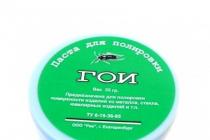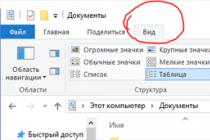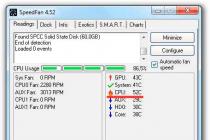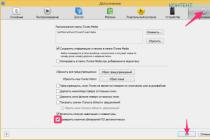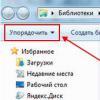The ancient Basilica of San Zeno Maggiore has gone through a lot of destruction in its history and has risen from the ruins many times. The first church on this site appeared in the 5th century at the direction of King Theodoric, who ordered the erection of a chapel over the grave of Bishop Zeno of Verona. This saint (by the way, a native of North Africa) was already very revered c. One of the ancient manuscripts even mentions the following miracle: when the city was flooded during a flood, the water allegedly stopped right in front of the threshold of his church.
In the 9th century, the old basilica was destroyed and a new church was built in its place - also specifically for the relics of St. Zeno. It stood for about a century, and after that it was practically razed to the ground during the war with the Hungarians. During the period when the preserved crypt of the church was undergoing restoration, the relics were kept in the cathedral, and then they were returned to their place.

Finally, in 967, the Basilica of San Zeno Maggiore was completely rebuilt again. In a modern building, we can observe individual elements of the construction of those years, because later the temple was still rebuilt after the earthquake of 1117, expanded and rebuilt. In the 11th century, a bell tower was erected here, and in the 13th century, a Benedictine monastery was built next to the basilica.

Over time, the monastery ceased to exist, and by the 19th century the church itself was dilapidated and was forgotten by the parishioners. Its restoration, already as a historical monument, began only in 1993. Today it is not only a significant tourist attraction, but also a functioning temple.

How to get to the Basilica of San Zeno Maggiore
The Basilica of San Zeno Maggiore is located at Piazza San Zeno, on the left bank of the Adige River. This is a fairly lively area with good transport links, there are several well-known hotels and restaurants.
The exact address: Piazza San Zeno, 2, 37123 Verona, Italy
How to get there from Verona train station:
Option 1
On foot: 1.6 kilometers via Circonvallazione Oriani and Circonvallazione Maroncelli. Travel time will be about 20 minutes.
Option 2
Bus: take route 91 to stop P.za Corrubbio 6.
On foot: 200 meters. Follow Vicolo dietro Caserma Chiodo southwest towards Piazza Corrubbio. Turn right onto Via S. Procolo. The destination will be on the right.
Basilica of San Zeno Maggiore on the map
What to see
The Basilica of San Zeno Maggiore was built with three naves - the highest in the center and the lower side naves. It is made of golden-pink tuff, and the facade is decorated with a marble portal. Two tall columns framing the entrance rest on the figures of lions, and above you can see marble statues of two saints - John the Theologian and John the Baptist. Above the front door, the bishop himself is depicted, surrounded by soldiers and horsemen. Such a luxurious design was created by the Italian master Nicolo, who also worked on the decoration of the Cathedral of Verona.
In addition, on the facade of the basilica, you can see marble bas-reliefs with scenes from the Holy Scriptures, as well as scenes from some local legends. In short, before getting inside, visitors spend a lot of time looking at these artfully carved scenes and the original architecture of the temple. The largest element of the façade is the round window by the architect Brioloto. It was named "Wheel of Destiny" because of the six figures of people located in a circle - some of them depict joy, others in despair.
The window on the facade of the basilica is called the Wheel of Fate, and the figures around the window depict joy and despair
The gates of the Basilica of San Zeno Maggiore are no less interesting. Lined with 48 bronze plaques, they deserve special attention. On each tablet there is one of the Bible stories, and here you can also find scenes from the life of Zeno of Veronius.
What's interesting inside
Many tourists agree that the inside of the Basilica of San Zeno Maggiore looks much more spectacular than the outside. There is something to see here - a stately interior with columns, rich decoration, balustrades and marble statues.
In the presbytery, you can see an ancient fresco by the artist Altichiero with the image of the Virgin Mary, it dates back to 1397. There is also a 14th century cross and a 16th century triptych. The author of the latter was the famous Italian artist Andrea Mantegna. Interestingly, part of this triptych is currently kept in the Louvre. During Napoleon's invasion of Italy, he was taken out of Verona, and then returned back to the basilica, but without the lower panels (instead of them, you can see copies).

The presbytery is separated from the rest of the church by an elegant balustrade - a real work of art. It is decorated with statues of the 12 apostles headed by Jesus Christ, and a little further you can find a sculpture of St. Zeno, whose authorship is still unknown.

But the main value of the Basilica of San Zeno Maggiore is, of course, a transparent shrine with the relics of the patron saint of Verona. It is located in a dungeon - a church crypt, where visitors are allowed to go on a guided tour. In addition to tourists, many pilgrims come here every year.

Finally, another interesting place in the basilica is the covered gallery (cloister) adjacent to the main building. It houses several medieval tombstones, as well as a collection of antique inscriptions. And the walk itself along the double colonnade with arched openings will appeal even to those who are indifferent to ancient architecture.

Opening hours and ticket prices
The Basilica of San Zeno Maggiore is ready to welcome guests:
- March to October - 8:30 am to 6:00 pm.
On Sundays, it is available to tourists no earlier than 12:30, regardless of the time of year (in the morning mass is held in the church).
Look for up-to-date information at.

Excursions
Since the Basilica of San Zeno Maggiore is a functioning temple, it regularly hosts mass and organ sounds. For believers, admission is, of course, free. Tourists can come here for an excursion, the ticket price is 2.5 euros ( 2nd ~ 172 RUB )... Alternatively, you can purchase the Verona Card and visit this temple for free, along with other historic buildings and museums in Verona.

Together with the ticket, visitors are given an audio guide in Russian - they can learn the history of the church and its main attractions. The price also includes a visit to the dungeon to the relics of St. Zeno. Photographing is allowed almost everywhere. The duration of the audio guide lecture is about half an hour, but it is worth allocating at least an hour and a half for the excursion, because there is still a cozy patio where you just need to sit in silence, enjoying the atmosphere.

Panorama of the Basilica of San Zeno Maggiore in Verona
The Basilica of San Zeno Maggiore is an amazing place where time seems to stop, where you want to think about eternal values. When you decide to leave the temple, we recommend staying in Piazza San Zeno - on Sundays there is an antique market and you can buy original souvenirs. Then go to other interesting places in Verona - literally 10-15 minutes walk is the Arsenale Franz Josef I Museum and the ancient castle of Castelvecchio.
Business card
Address
Piazza San Zeno, 2, 37123 Verona VR, Italy
Official site
Working hours
November to February - from 10:00 to 17:00;
March to October - 8:30 am to 6:00 pm
Visits on Sundays are allowed no earlier than 12:30
Something is wrong?
Report inaccuracies
The Abbey of Saint Zeno was a whole monastic complex, which played a very important political role in the Middle Ages for Verona. The abbey complex included the abbot's palace, two towers, a church and cloisters. In the Middle Ages, a residential area grew up around the monastery, for which it served as a fortress. However, the abbey itself was destroyed during the time of Napoleon, and the Basilica of St. Zeno with a bell tower, which was built in the 12th century, several cloisters, a tower and the Church of St. Proclus have survived to this day.
Surviving to this day
San Zeno Maggiore is a fine example of Italian architecture, executed in the Romanesque style. In addition, a large collection of works of art from different eras is kept within the walls of the basilica. The building that can be seen today was built in the 10-11th centuries on the site of an ancient church. At the beginning of the 10th century, the relics of the saint were transferred to the crypt, which is located on the lower floor of the current basilica.
The façade of the temple makes a lasting impression with its powerful simplicity and beautiful Romanesque decoration. In the very center there is a huge rose, which is a symbol of the wheel of fortune. The six statues that adorn the rose itself convey all the ups and downs in a person's life and how quickly things can change.
The portico includes a tympanic arch that rests on columns. The base of the columns is decorated with two stone lions. At the very top of the pediment is the blessing hand of the Lord, and under the arch, on the lunette, Saint Zeno is depicted trampling the demon with his feet and blessing the people. On both sides of the portal there are 18 bas-reliefs created in the 12th century. Nowadays, the church portal is always closed in order to preserve the luxurious bronze doors, which are decorated with 24 reliefs of the 12th century, dedicated to the Old Testament.
Medieval grandeur
The interior of the church has three tiers: the presbytery, the central part and the crypt. The crypt, built in the 10th century, was rebuilt twice in the 13th and 15th centuries. It is a small church with nine naves separated by 49 columns decorated with carved capitals. The central part of the temple includes three naves, separated by powerful cruciform pilasters with composite capitals.
The church naves, like the Cathedral of Verona, contain a large collection of art dating back to the 12th and 14th centuries. Among them you can see a font made in the 13th century, a fresco depicting St. Christopher, the painting "Our Lady and the Saints" by Francesco Torbido and many others. Above the crypt is a presbytery, which rises strongly above the level of the nave. A sample of Renaissance painting is kept here - the polyptych of Saint Zeno, dating back to the 15th century. The lower part of the paintings was replaced with a copy, and today you can admire it in France.
The Basilica of San Zeno Maggiore in Verona is famous for the relics of Saint Zenone da Verona. In his modern form the basilica was built in the 10th century according to all the canons of the Romanesque style.
The history of the Basilica of San Zeno Maggiore
At the burial site of Zeno of Verona, who was the first bishop of Verona, a small church was originally built. The work was carried out in the 5th century by order of Theodoric the Great.
Under King Pepin in the 9th century, it was decided to destroy the old church in order to erect a new building in its place. The remains of Saint Zeno were moved to the newly built church. However, this church also did not last long - in the 10th century, the building was badly damaged during the war with the Hungarians.
In the same 10th century, a modern Romanesque basilica was erected on the site of a dilapidated church. The new church for the most part withstood the earthquake of 1117 and by 1138 it was expanded and completely restored. In the 14th century, the roof of the building was replaced, and the Gothic apse and plafond of the central nave were created.
Not far from the basilica there is a detached tower, which was built in the 13th century. This is part of a monastery that was once located next to the church.
The architecture of the Basilica of San Zeno Maggiore
Outwardly, the basilica is not very remarkable: a restrained Romanesque style in gilded pink colors with a large window in the central part. But special attention should be paid to the central entrance with Gothic decorations and the interior decoration of the church. It is here that the famous triptych of Andrea Mantegna is located.
Photo: Kiev.Victor / Shutterstock.com
Facade
The Basilica of San Zeno Maggiore has three naves. Golden tuff from Verona was used for its construction. In the middle part of the basilica there are marble inserts depicting scenes from the Last Judgment. Their author is the sculptor Brioloto.
Central portal
Above the entrance, you can see the Gothic portal, created in the 12th century by the master Nicolo. He also worked on the central entrance to Cathedral Verona.
At the base of the entrance columns there are sculptures of lions tearing up prey. On the portico there are figures of John the Baptist, John the Theologian and symbols of the 12 months of the year. And the lunette of the portal is decorated with the image of Saint Zeno, who is surrounded by soldiers.

On the sides of the portal there are 16 bas-reliefs telling about scenes from the Old and New Testaments.
Above the entrance, in the central part of the facade, there is a round rose-shaped window. It was created by the same Brioloto. Since the figures of 6 juggling characters are depicted around the circumference of the window, which either ascend upwards by fate, then fall downwards, this window is called the "Wheel of Fortune".
On the gates of the basilica there are 48 panels of the 12-13th centuries, belonging to German masters. They depict 4 miracles of Saint Zeno and scenes from the Bible.
Interior decoration
Inside the basilica, there are two massive columns that support the vault of the church. The main nave rests on two semicircular arches. Two wide staircases lead to the crypt.

The basilica has a 12th century baptismal font made of solid Verona marble. Also of artistic value are two bowls and a carved altar with columns, at the base of which there are figures of a lion, a bull and a snake, symbolizing the evangelists.
On the right is the Baroque altar of the Sorrowful Madonna. Also noteworthy is the wide porphyry bowl from Roman baths.
And most importantly, the basilica contains a crystal shrine with the relics of St. Zeno, which were found in a church that was previously located on this site.
Frescoes
A large number of frescoes from the 13th-14th centuries adorn the walls of the basilica. These are images of the White Madonna, St. Christopher, the Crucifixion of Christ, Baptism, Saints George and Stephen. There is also the famous fresco "Madonna Enthroned with Saints" by Altichiero in 1397 and the triptych "Madonna Enthroned with Angels and Saints" by Andrea Mantegna.
On the balustrade stands out the statue of Christ surrounded by 12 apostles. The statue of Saint Zeno can be seen in the small apse on the left.
The cloister
The cloister was added to the basilica in the 12th century. Throughout the gallery, there are double columns connected by arches. One of the pavilions houses a statue of John Paul II. Among the medieval tombstones stored in the cloister, the tombstone of the Scaliger family from 1313 occupies a special place. A collection of inscriptions from ancient times is kept in the lapidarium next to the cloister.
One of the most significant medieval churches in Verona, San Zeno Maggiore is a typical example of Romanesque architecture in northern Italy. In San Zeno Maggiore, the remains of Saint Zeno are kept - the theologian, writer and the first bishop in Verona, on whose grave the church was erected.
The history of San Zeno Maggiore

Saint Zinon was born in North Africa, in Mauritania, and died in 380, and a couple of centuries later a church was founded on the site of his grave. He is credited with numerous miracles and healings of the sick.
It was later rebuilt for the needs of the pilgrims and the maintenance of the Benedictine monastery founded by King Pepin. After the invasion of the Hungarians, the sacred place was destroyed and it was reconstructed again only in 983. The reconstruction was led by Saint Adalberto.
Later, due to wars and earthquakes, the church collapsed several times and was rebuilt. The last time this happened was in 1117. As a consequence of a strong earthquake. This church in Verona was practically destroyed, but later, in 1138, the city was rebuilt by San Zeno Maggiore.
It received its modern look only in 1398. From 1387-98 the asp and a new roof were completed, the main nave of the basilica was also raised. The Benedictine monastery at San Zeno was liquidated in 1770 and from 1806 this place became a parish church. By the beginning of the 19th century, the shrine was abandoned and finally restored only in 1931.
Church of San Zeno Maggiore today

Today, the sacred Cathedral of San Zeno Maggiore is one of the most visited attractions in Verona. The church in Verona has a magnificent classical Romanesque façade, bas-relief bronze doors and majestic frescoes inside. Many elements of the church in Verona were made at different times and by different craftsmen.

- The main western entrance is framed by a portal supported by 2 columns and a stately façade. The facade is built of tuff and bricks, and in the middle there is a large round stained glass window with figures of people and animals, created by the sculptors Brioloto and Adamino in the period 1217-1225 and is called the Wheel of Fortune. The portal itself dates back to 1138 and is adorned with delightful Romanesque sculptures.

The magnificent bronze doors of San Zeno Maggiore, dating back to the 12th century, are one of Verona's greatest cultural treasures. The 48 bas-reliefs that adorn the gate panels are some of the first bronze casts from the Roman Empire and illustrate the biblical stories and life of St. Michael and St. Zeno. The bronze panels were created by several unknown artists. On the left door, the figures depicting scenes from the New Testament were created by a German artist around 1100. On the right are scenes from the Old Testament, by a local Italian artist from the second half of the 12th century.

- The free-standing bell tower was built in 1178, and the high crenellated tower in the north is the only surviving part of the Benedictine monastery. The internal layout of the church consists of aisles supported by columns and covered with a wooden roof. A staircase rises from both sides of the hall leading to the choir. Below the church is the crypt.
From the north, a cloister (covered passageway) is attached to the church, connected to the church by a passage. The cloister has a double row of small pink marble columns, several medieval tombstones and monuments. The tombs date back to the 13th century, but there is reason to believe their origin is more ancient. There is also a monument dedicated to Pope John Paul II.
How to get there
San Zeno Maggiore is located in Verona on the square of the same name (Piazza San Zeno). It's a bit out of the way of the old town, but you can still walk there without any problems.
The church is open to the public Monday through Friday from 8 am to 6 pm and Sunday from 1:30 am to 6 pm.
San Zeno Maggiore is one of the most visited tourist destinations in Verona. The magnificent Gothic and Romanesque architecture and the amazing works of medieval masters will not leave you indifferent.





